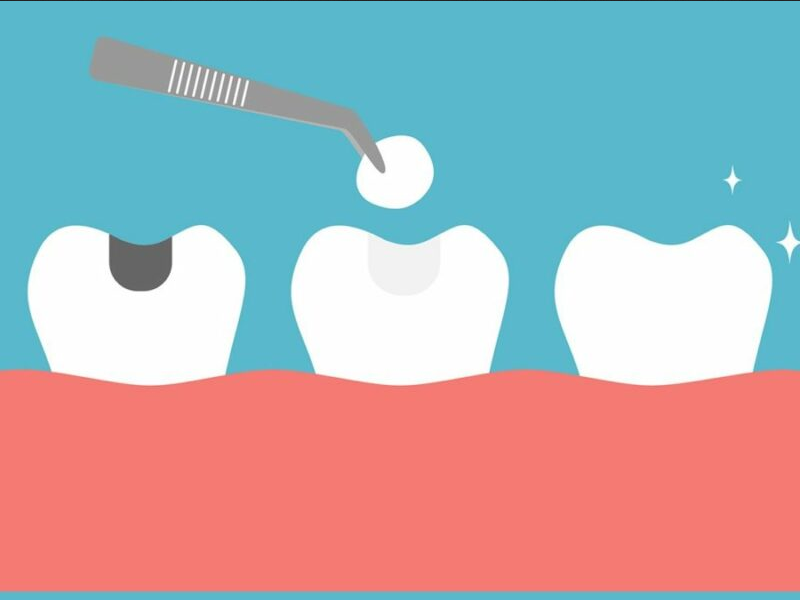For a small-to-medium cavity that needs dental attention, your dentist may recommend a dental filling. This virtually painless procedure is a great way to preserve your living tooth structure while removing decay that’s set in.
Some of the most common questions I get about fillings include ones such as these:
- How do I know if I need a filling?
- Should I have amalgam (silver) fillings removed?
- Does it hurt to get a filling?
- How many times will I need to go to the dentist for my filling?
First of all, don’t worry! Getting or replacing fillings is one of the most painless dental procedures.
Also, there’s a lot of confusion online about which types of fillings to consider. We’ll cover that in detail so you can go to your next appointment with more confidence and less concern.
Let’s look at what dental fillings are, what to expect when you get a filling and other common questions.
What is a dental filling?
A dental filling is a dental procedure used to restore part of a tooth that has been damaged by decay.
The objective with a filling is to remove the decayed area, clean it well, and “fill” the space with a material, returning the tooth to its normal shape and, hopefully, normal function.
There are a number of materials that can be used for a tooth filling. Amalgam (silver colored), composite (white, or shaded to match the color of your remaining teeth), and gold are the most common materials used. Porcelain fillings are another option that can have you in and out in just a visit
How does my dentist know I need a filling?
The most tell-tale signs of a cavity or decay are pain or sensitivity around the affected area or food suddenly getting caught between teeth. You should call your dentist as soon as you feel pain or when cold drinks or hot foods cause you to jump with discomfort or tingling.
Because pain occurs when a cavity is already fairly large, it’s important to be seen quickly when you feel pain. Most dental professionals leave time in their schedules for emergency appointments.
Don’t settle for using numbing agents like clove oil or Orajel and ignore your tooth pain. Schedule an appointment right away for sharp or throbbing tooth pain in one or just a few teeth.
When you get to the dentist’s office, s/he will perform some simple tests.
Visual Assessment: Your dentist will do a visual assessment and look around your mouth, most carefully around the area where you complain of pain. At this point, s/he is looking for the most obvious signs of a cavity: cracks, discoloration, white colored lesions, or even rough parts or “spots” on the outside of your teeth.
Probing/Palpation: After visual assessment, your dentist will then probably use a small instrument to gently tap on and poke your teeth. The instrument is like a small pick. Different kinds of decay will feel differently to the pick. This is another way to determine the severity of your tooth decay. The sharp point engages the decayed dentin and makes a pinging sound when pulled away from it. Dentist call this a “stick.” As a patient, you can hear and feel the tug of the engaging dental explorer, called the pick.
This palpation is effective in finding occlusal decay, which is a cavity/decay on the top or exposed sides of teeth. However, it can’t detect interproximal decay, meaning cavities/decay between the teeth.
Probing with visual assessment can also help the dentist identify other teeth that may need further examination or a problem not even related to cavities. For example, pain in the area around an upper tooth may actually be coming from decay in a lower tooth. This is called “referred pain” and can lead to an erroneous diagnosis.
There are several medical issues that can cause pain in and around your teeth other than decay. Referred tooth pain may be due to problems with your heart or lungs, respiratory illness, or even neurological conditions. (1) For example, the roots of your upper teeth are close to your sinus passages, a sinus infection or inflammation may cause pain or discomfort in your teeth.
X-Rays: After the dentist finishes a visual examination and has palpated around the inside of your mouth, s/he will most likely have a set of dental x-rays taken. These images give the most in-depth look at your teeth. They allow the dentist to determine if there is, in fact, a cavity, as well as the size and severity of any cavities present.
An x-ray will give your dentist the most accurate picture of what’s needed when deciding between a filling or a more drastic treatment, like a root canal.
Diagnosis and Treatment Plan: At this point in the examination, you will be given a synopsis of the dentist’s findings and a course of action.
![]()
If I review a patient’s findings and discover a very small area of decay in the enamel (not dentin), I may recommend a plan for remineralization, or healing cavities naturally. There may be a chance for remineralization if the patient can keep the area clean and follow a straightforward diet plan with foods to reverse cavities.
However, the cavity may be too large to fill or located in an area of the mouth where the patient would have difficulty keeping it clean. Or, I may know the patient’s diet is not conducive to remineralization. In these cases, I would proceed with a dental filling.

